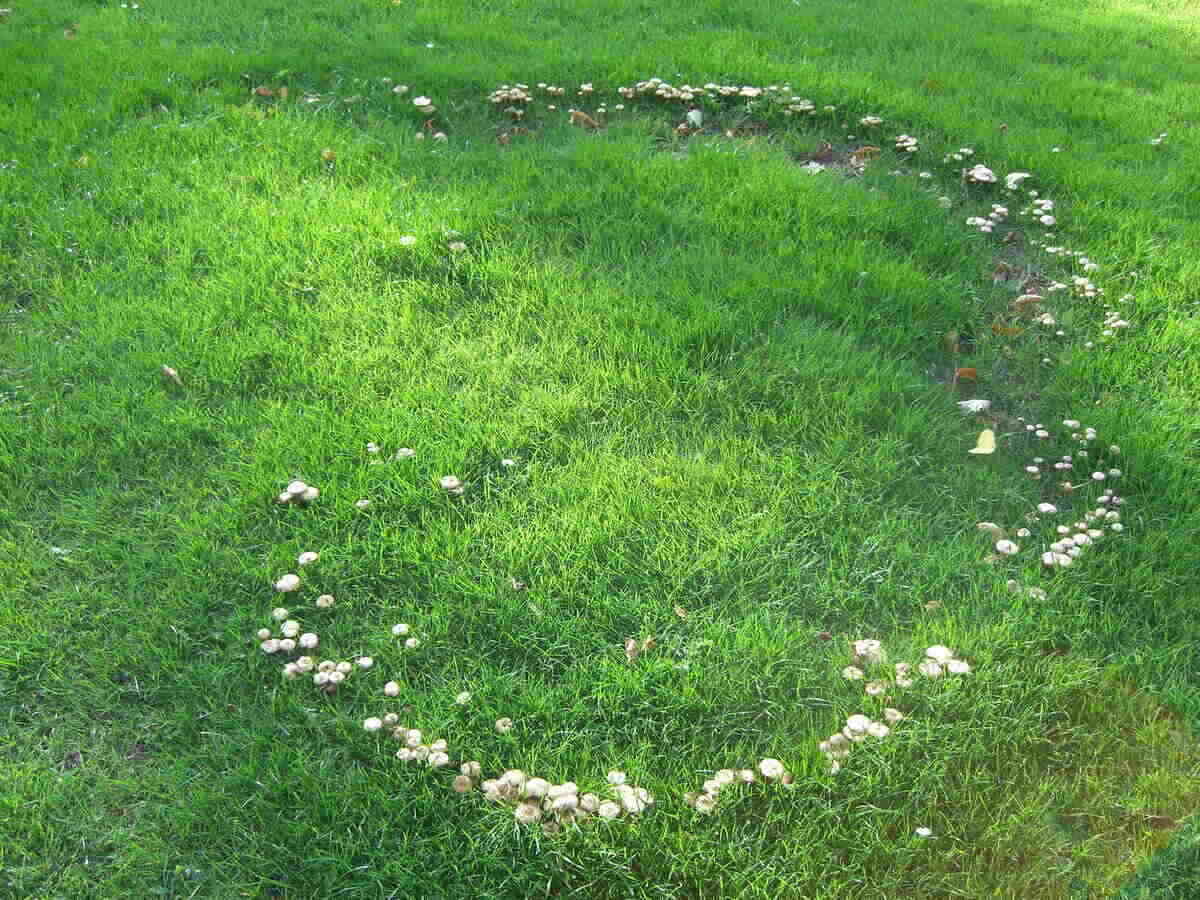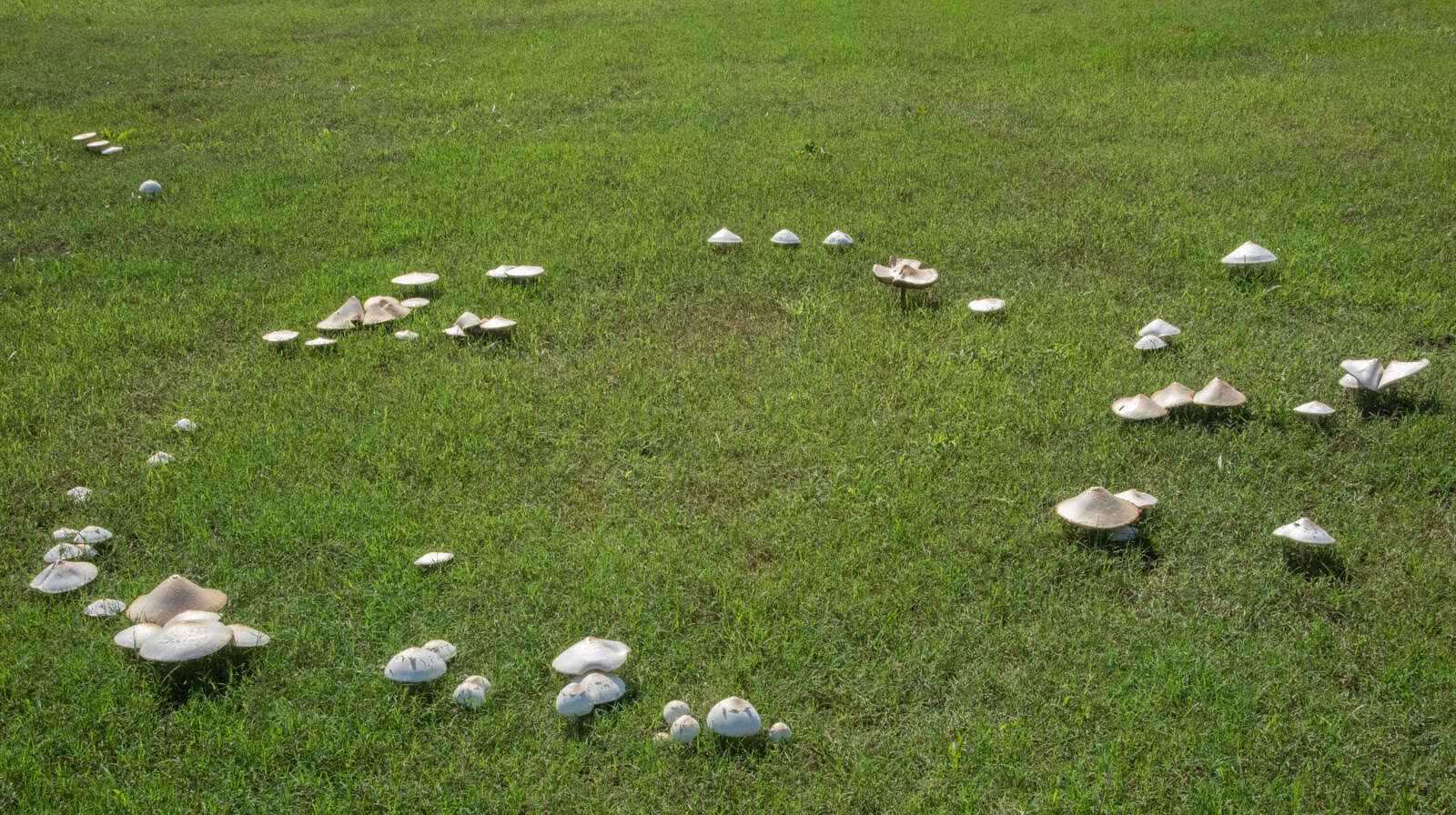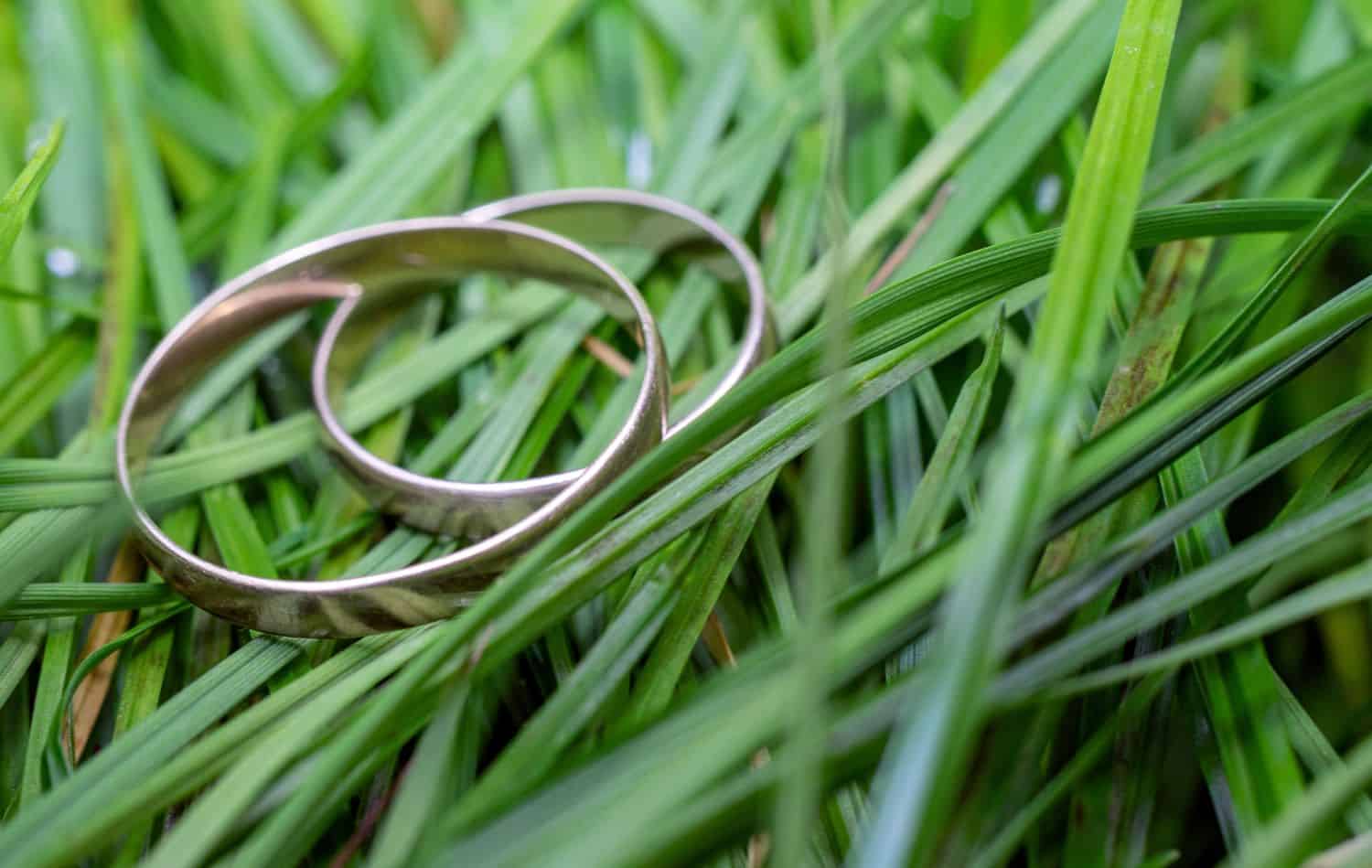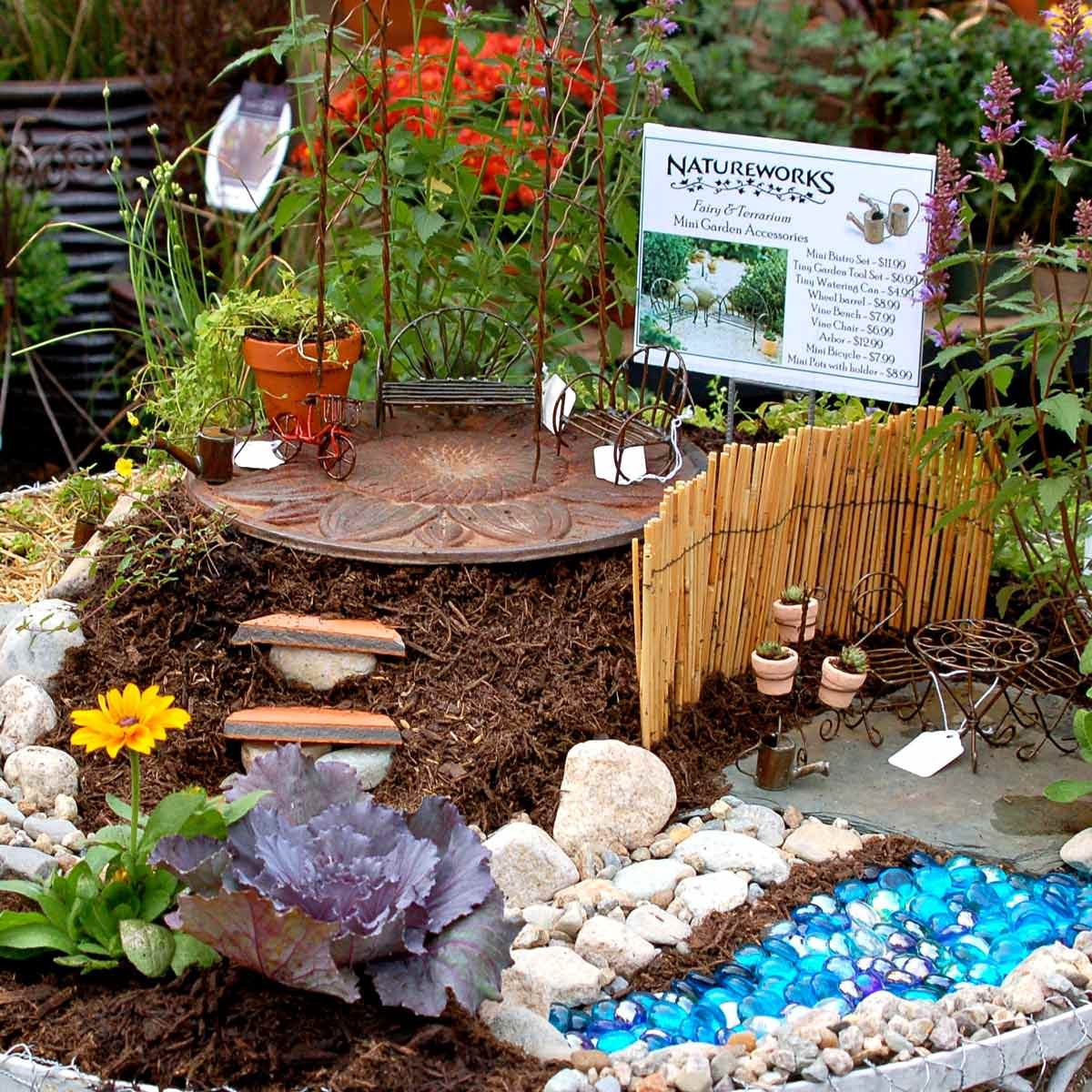Home>Gardening & Outdoor>Landscaping Ideas>What Is Fairy Ring In Grass


Landscaping Ideas
What Is Fairy Ring In Grass
Modified: February 18, 2024
Learn about the impact of fairy rings on grass and get landscaping ideas to address this common lawn issue. Explore effective solutions for maintaining a healthy and beautiful lawn.
(Many of the links in this article redirect to a specific reviewed product. Your purchase of these products through affiliate links helps to generate commission for Storables.com, at no extra cost. Learn more)
Introduction
Imagine walking through a lush green lawn and stumbling upon a mysterious circle of vibrant, flourishing grass. This enchanting phenomenon, known as a fairy ring, has captivated the curiosity and wonder of many. Fairy rings are a fascinating natural occurrence that can add an air of magic and mystery to any landscape. In this article, we will delve into the captivating world of fairy rings in grass, exploring their causes, types, impact on grass, and strategies for managing them effectively.
From ancient folklore to modern-day landscaping, fairy rings have sparked imagination and intrigue. Understanding the science behind these natural wonders can deepen our appreciation for the intricate balance of nature and the beauty it manifests in unexpected ways. Let’s embark on a journey to unravel the secrets of fairy rings and gain insight into their impact on the verdant tapestry of grassy landscapes.
Key Takeaways:
- Fairy rings in grass are mysterious circles caused by fungi, impacting grass growth. They can be lush or partial, affecting soil and grass health, requiring proactive management strategies.
- Managing fairy rings involves addressing soil conditions, using fungicides, and proper lawn maintenance. Observing and early intervention are crucial for preserving the beauty of the landscape.
Read more: What Is A Fairy Ring In Grass
What Causes Fairy Rings?
Fairy rings are a result of fascinating underground processes that lead to visible manifestations on the surface. These enchanting circles are commonly caused by various types of fungi, which play a pivotal role in shaping the landscape. The intricate interplay of environmental factors and biological activity contributes to the formation of fairy rings, adding an element of mystery to their origin.
One of the primary causes of fairy rings is the underground growth of fungi, particularly species belonging to the genera Agaricus, Marasmius, and Lepiota. These fungi form a network of mycelium, which are thread-like structures that spread beneath the soil’s surface. As the mycelium expands, it secretes enzymes that break down organic matter, releasing nutrients essential for the fungi’s growth. This process forms a circular pattern, giving rise to the characteristic shape of fairy rings.
The mycelium’s growth and nutrient release can have profound effects on the surrounding soil and grass. In some cases, the mycelium’s activity can lead to an accumulation of nutrients, resulting in lush, vibrant grass within the fairy ring. Conversely, the mycelium’s presence can also inhibit water penetration and nutrient uptake in the soil, leading to the formation of bare patches or withered grass within the ring.
Environmental conditions, such as moisture levels and soil composition, also play a crucial role in the formation of fairy rings. Fungi thrive in environments with ample moisture and organic matter, making lawns with thatch buildup more susceptible to fairy ring development. Additionally, soil compaction can influence the movement of water and nutrients, impacting the growth and spread of fungi beneath the surface.
Understanding the complex interactions between fungi, soil, and environmental factors is essential for comprehending the underlying causes of fairy rings. By unraveling the intricate processes at play, we can gain valuable insights into the mechanisms shaping these captivating natural phenomena.
Types of Fairy Rings
Fairy rings exhibit remarkable diversity, with variations in appearance and behavior that add to their allure. These captivating natural formations can be classified into several distinct types based on their characteristics and the underlying biological processes driving their formation.
One common classification of fairy rings is based on their impact on the surrounding grass and soil. Lush fairy rings, also known as “fairy circles,” are characterized by a ring of vibrant, luxuriant grass encircling an area of withered or dead grass. These rings often emanate an aura of enchantment, with the contrasting hues of healthy and distressed grass creating a visually striking spectacle.
Another type of fairy ring is the “fairy arc,” which presents a partial circular pattern rather than a complete ring. Fairy arcs may manifest as segments of lush or discolored grass, creating a fragmented yet captivating display within the landscape. The irregular shape of fairy arcs adds an element of unpredictability to their appearance, evoking a sense of natural artistry.
Furthermore, fairy rings can be categorized based on the type of fungi driving their formation. Some fairy rings are attributed to saprotrophic fungi, which derive nutrients from decaying organic matter in the soil. These fungi play a vital role in the decomposition of organic material, contributing to the nutrient cycling processes within the ecosystem. Other fairy rings are associated with ectomycorrhizal fungi, which form symbiotic relationships with the roots of plants, including grass species. The presence of ectomycorrhizal fungi can influence the nutrient uptake and overall health of the grass within the fairy ring.
Additionally, fairy rings can exhibit variations in size, with some rings spanning only a few feet in diameter, while others extend to several yards across. The size of a fairy ring can influence its visual impact on the landscape, with larger rings commanding attention and awe due to their expansive presence.
By exploring the diverse types of fairy rings, we gain a deeper appreciation for the intricate nuances of these natural formations. Each type offers a unique glimpse into the complex interactions between fungi, soil, and vegetation, adding a touch of wonder to the tapestry of the natural world.
Fairy rings in grass are caused by underground fungi and appear as circles of darker, thicker grass. To prevent them, improve soil drainage and aerate the affected area.
Impact on Grass
The presence of fairy rings can have multifaceted effects on the health and appearance of grass within their vicinity. These effects stem from the intricate interactions between fungi, soil, and environmental factors, shaping the landscape in distinctive ways. Understanding the impact of fairy rings on grass is crucial for implementing effective management strategies and preserving the vitality of the lawn.
One of the most noticeable impacts of fairy rings on grass is the contrast in growth and appearance between the inside and outside of the ring. Within the ring, the grass may exhibit lush, vibrant growth, creating a striking visual boundary between the affected area and the surrounding lawn. The abundance of nutrients released by the fungi’s mycelium can contribute to the vigorous growth of grass within the ring, resulting in a verdant display that captures the eye.
Conversely, the outer edge of the fairy ring often presents a different picture, with the grass displaying signs of distress, such as yellowing, thinning, or even death. The mycelium’s activity can hinder water and nutrient uptake in the soil, leading to the withering of grass beyond the ring’s boundary. This contrast in grass health creates a compelling visual effect, emphasizing the boundary between the affected and unaffected areas of the lawn.
Furthermore, the presence of fairy rings can influence the soil’s physical properties, impacting its ability to support healthy grass growth. The mycelium’s growth and decomposition of organic matter can lead to soil compaction and reduced water infiltration, affecting the overall soil structure. These changes in soil composition and structure can contribute to the development of bare patches, uneven ground, or altered drainage patterns within and around the fairy ring.
In addition to the visible effects on grass and soil, fairy rings can also impact the lawn’s resilience to environmental stressors. The presence of fungi and the resulting changes in soil composition can affect the grass’s ability to withstand drought, disease, and other environmental challenges. Understanding these impacts is essential for devising proactive measures to mitigate the effects of fairy rings and maintain the overall health and vigor of the lawn.
By gaining insights into the impact of fairy rings on grass, we can cultivate a deeper understanding of the complex dynamics at play within the landscape. This understanding forms the foundation for implementing informed strategies to manage fairy rings and preserve the natural beauty of the grassy expanse.
Managing Fairy Rings in Grass
Effectively managing fairy rings in grass requires a comprehensive approach that addresses the underlying causes and mitigates their impact on the landscape. By integrating proactive measures and strategic interventions, property owners and landscapers can minimize the visual and physiological effects of fairy rings while fostering the overall health and vitality of the grass.
One key aspect of managing fairy rings involves addressing the underlying soil conditions to create an environment less conducive to fungal growth. Aeration and dethatching can help alleviate soil compaction and reduce thatch buildup, creating a more hospitable environment for grass roots and minimizing the conditions that favor fairy ring development. Additionally, incorporating organic amendments into the soil can promote microbial diversity and enhance nutrient cycling, contributing to a balanced soil ecosystem.
Another approach to managing fairy rings is the targeted application of fungicides to control fungal growth and minimize the spread of mycelium. Fungicides can be applied in a manner that targets the fungi responsible for fairy ring formation, helping to suppress their activity and limit the visible effects on the grass. It is essential to consult with a knowledgeable professional when using fungicides to ensure effective and responsible application.
Furthermore, implementing proper lawn maintenance practices, such as regular mowing, watering, and fertilization, can contribute to the overall resilience of the grass and mitigate the visible impact of fairy rings. Maintaining a consistent mowing height and watering schedule, along with balanced fertilization, can support the grass’s vigor and minimize the contrast between the affected and unaffected areas of the lawn.
In some cases, physical removal of the fairy ring, including the affected grass and soil, may be necessary to address persistent or visually disruptive rings. This approach can be followed by reseeding or sodding the affected area to restore the uniformity and aesthetic appeal of the lawn. Proper disposal of the removed material is crucial to prevent the spread of fungal spores and mycelium to other areas of the property.
Engaging in ongoing monitoring and observation of the lawn can also aid in early detection of fairy rings, allowing for timely intervention and management. By staying attuned to changes in grass growth and appearance, property owners can implement targeted strategies to address emerging fairy rings and minimize their impact on the landscape.
By embracing a holistic approach to managing fairy rings in grass, property owners and landscapers can uphold the beauty and vitality of the lawn while navigating the complexities of natural phenomena. Through informed interventions and a commitment to proactive care, the allure of the landscape can thrive, enchanting all who encounter its verdant splendor.
Read more: What Is Fairy Grass
Conclusion
As we conclude our exploration of fairy rings in grass, we emerge with a deeper appreciation for the captivating interplay of nature’s forces and the enchanting beauty they bestow upon the landscape. Fairy rings, with their mysterious circles and contrasting hues, offer a glimpse into the intricate dance of fungi, soil, and environmental factors, shaping the tapestry of grassy expanses in wondrous ways.
From the lush vibrancy within the ring to the subtle transformations in soil composition, fairy rings leave an indelible mark on the grass and soil, evoking a sense of natural artistry and fascination. The contrast between the affected and unaffected areas of the lawn forms a visual spectacle that captures the imagination and invites contemplation of the unseen forces at work beneath the surface.
Managing fairy rings requires a harmonious blend of proactive measures, including soil enhancement, targeted interventions, and vigilant monitoring. By addressing the underlying causes and minimizing the visible impact, property owners and landscapers can preserve the integrity and allure of the grassy expanse, ensuring that the enchantment of the landscape endures.
As we navigate the realm of fairy rings, we embrace the opportunity to deepen our understanding of the intricate balance of nature, where beauty and mystery converge in unexpected ways. By unraveling the secrets of fairy rings and engaging in thoughtful stewardship of the landscape, we honor the enchanting legacy of these natural wonders, allowing their allure to captivate and inspire for generations to come.
With each step through the verdant expanse, we carry with us the wonder and wisdom gleaned from the realm of fairy rings, where magic and science intertwine to shape a world of timeless fascination.
Frequently Asked Questions about What Is Fairy Ring In Grass
Was this page helpful?
At Storables.com, we guarantee accurate and reliable information. Our content, validated by Expert Board Contributors, is crafted following stringent Editorial Policies. We're committed to providing you with well-researched, expert-backed insights for all your informational needs.















0 thoughts on “What Is Fairy Ring In Grass”